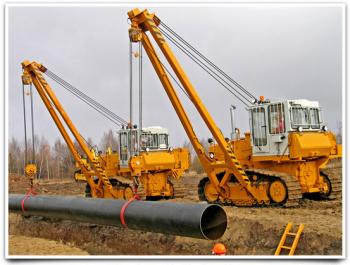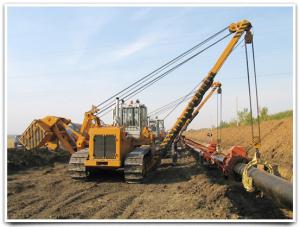Main menu
You are here
PIPELINE CONSTRUCTION & DESIGN
PIPELINE

Pipelines are a very important part of modern civilization. And pipeline transport has become the most important way of moving fluids from one point to the other. Pipelines have been used for millennia for the movement of water and pipeline technology was able to revolutionize petroleum exploration in the 1800’s (Antaki, 2003). These days pipelines are used to move substances ranging from water, oil or natural gas, ethanol, hydrogen gas, to beverages and pneumatically driven particulate solids (Shukov, 2009).
Pipelines typically cost more than roads or
open channels. But they can offer reductions in cost based on shorter more direct routes than roads or open channels (Linsley et al, 1992).
Construction of pipelines, especially for large scale water supply or petroleum projects are large multi-disciplinary activities which involves the investment of large amounts of cash and other resources. Because of this, and the fact that safety is of high essence in the construction and operation of pipelines (Kuryla, 2009) environmental factors including the soil that it will be laid upon or buried underneath should be taken account during the design process.
Defining Terms
Consideration: something to be taken into account when weighing the pros and cons of a situation before making a decision
Design (Pipeline): The process of creating detailed plans and drawing of the nature of the pipeline with a view to solving problems that might occur in the construction and operation of the pipeline these problems may be hydraulic, structural or geotechnical.
Geotechnical: Application of technical knowledge and skills to some aspect of earth material, usually earth materials found at or near the earth’s surface (Holtz, 1981).
Pipeline: A pipe or system of pipes designed to carry something such as oil, natural gas, or other petroleum-based products over long distances, often underground.
Types of Pipelines
Pipelines maybe classified based on different criteria (Shukov, 2009). These criteria include Material Made out of: Pipelines are made out of various materials such as steel, cast iron, plastic, non-ferrous metals such as aluminum; concrete, vitrified clay and even wood.
- Substance Transported: As earlier mentioned, Pipelines could be used to transport substances such as water, waste water, petroleum oil, gas, beverages and particulate matter such as cement and flour.
- Method of Construction/Environment: Pipelines are classified as either seamless, seam-welded or flange jointed, depending on method of joining. They are also classified as underground, above ground, elevated, offshore and underwater (submarine type)
- Function: Pipelines can be classified under this heading as transmission, distribution, or collection pipelines, based on the function of that line in relation to the larger system of pipelines.
Pipeline Design
The procedure for designing a pipeline depends on several factors which include: type of material transported, length of the pipeline, the environment of the pipeline, whether the pipeline is on land or offshore and the whether the climate is warm or cold. Liu (2003) puts across that the similarities in designing all pipeline types are more than the dissimilarities and hence, once a person understands how a pipeline was designed and built, it should not be difficult for him to design and built any other of any type

Pipeline Design and Build Process
Liu (2003) divides the planning and construction of pipelines into the following phases:
- Preliminary planning: Determining the origin and destination of the pipeline, the approximate length of the pipeline, the product to be transported, diameter and type of pipe used, hydraulic factors such as type of flows expected in a pipeline, approximate capital cost and running expenses.
- Route selection: The route selection being from a highway map and/or a topographical map. Aerial photography should be undertaken to obtain data needed for the design and preparation of route maps and property plats, which are requires for right-of-way acquisition.
- Right-of-way Acquisition: This acquisition may be done in the either by the landowners voluntarily negotiating with the pipeline owners for the sale, lease or easement of their plots. Also, for public pipelines, the procedure for condemnation, which is an involuntary legal process may be explored to acquire land.
- Soil borings, testing of soils and data collection: Once the acquisition of the right-of-way has been completed, the pipeline developer can undertake necessary geotechnical investigations and determine whether groundwater and/or hard rock will be encountered, and collect other data along the route needed for the design of the pipeline.
- Design: This involves structural design (in relation to loading and stresses), hydraulic analysis and design and also designing of a job schedule or scheme.
- Seeking of Legal Permits: Permits from different agencies including the Federal Environmental Protection Agency, the forestry services of the various states and the Ministry of Transportation.
- Pipeline Construction: This involves the actual work the lay the pipes and the appurtenances needed for the smooth economical operation of the pipelines. This involves right-of-way preparation, ditching and trenching, boring, tunneling, river crossing; welding, coating and wrapping; backfill and restoration of land.

